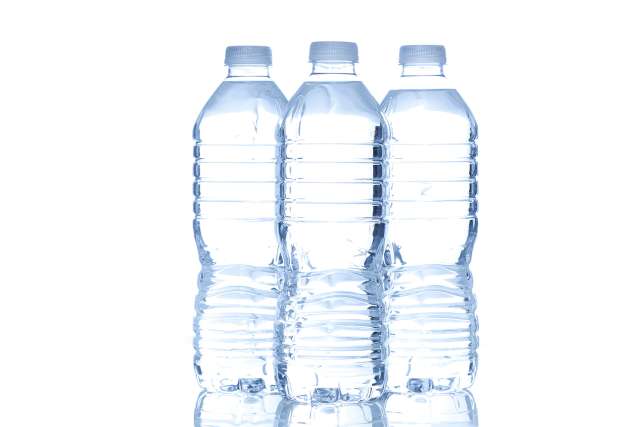There’s no doubt that water is one of the healthiest drinks around. It’s essential for keeping you hydrated without adding any calories, sugar or other additives to your diet.
Americans have obviously gotten the message about water consumption. In 2022, American consumers purchased nearly 16 billion gallons of bottled water — at a cost of $46 billion.
While drinking all that water is great, buying it in plastic bottles comes with a few unwanted problems. Too many of those bottles end up in oceans and landfills, leading to pollution. And new research shows they are also leading to consumption of tiny plastic particles.
What are nanoplastics?
As the name implies, nanoplastics are extremely tiny pieces of plastic. They are many times smaller than a speck of dust and cannot be seen with the naked eye.
Nanoplastics can leach into liquids (like water) stored in single-use plastic bottles. They can also find their way into bottled water during the manufacturing process.
How many nanoplastic particles are in bottled water?
It’s been no secret for years now that nanoplastics are lurking in bottled water and in products packaged or wrapped in other kinds of plastic. But new research has called attention to just how big an issue these particles may be.
A study published in January 2024 used new methods to analyze just how many nanoplastic particles really are floating around in the average plastic bottle of water. They found that a liter of bottled water can contain as many as 240,000 tiny plastic fragments. That number is 10 to 100 times more than previous estimates.
Those findings have raised new concerns about whether bottled water is safe to drink.
Are nanoplastics harmful to our health?
Ingesting hundreds of thousands of microscopic bits of plastic doesn’t sound very appetizing. And nanoplastics might be nearly invisible, but that doesn’t necessarily mean they are completely harmless.
So far, research on the possible health impacts of consuming nanoplastics has yielded mixed results. But there is some evidence that they may be negatively affecting our health. Studies conducted on animals and on cells in a lab suggest nanoplastics can impact a variety of organs and systems throughout the body. Exposure to high quantities of nanoplastics may affect cell’s immune function and cause inflammation.
There is even some evidence that by altering cell function, nanoplastics may increase the risk of some types of cancer. It’s important to note, however, that very little research to date has looked specifically at humans.
4 steps you can take to avoid nanoplastics
Exposure to nanoplastics (and their slightly larger cousins, microplastics) is nearly unavoidable in today’s world. So many of our foods and beverages come in plastic containers, get wrapped in plastic and are carried in plastic shopping bags.
Limiting the amount of single-use plastic in your life is important for more than your health. Skipping plastic bottles and bags is better for the environment: Between 4 and 12 million metric tons of plastic end up in the oceans each year. Those bottles and bags collect in the ocean and on the beaches where they harm fish, birds and other wildlife.
Limit your use of single-use plastics by:
- Investing in a good-quality reusable bottle (glass or stainless steel are best) and filling it with filtered tap water
- Bringing your own reusable bags — including ones you can use for produce — when you go to the grocery store
- Buying soaps and other cleaning products in refillable containers
- Reusing plastic food containers for storing other items whenever possible
Every time you avoid purchasing something in a single-use plastic bottle, bag or container, you’re helping the environment — and you’re helping yourself by limiting the nanoplastic particles you take into your body.



